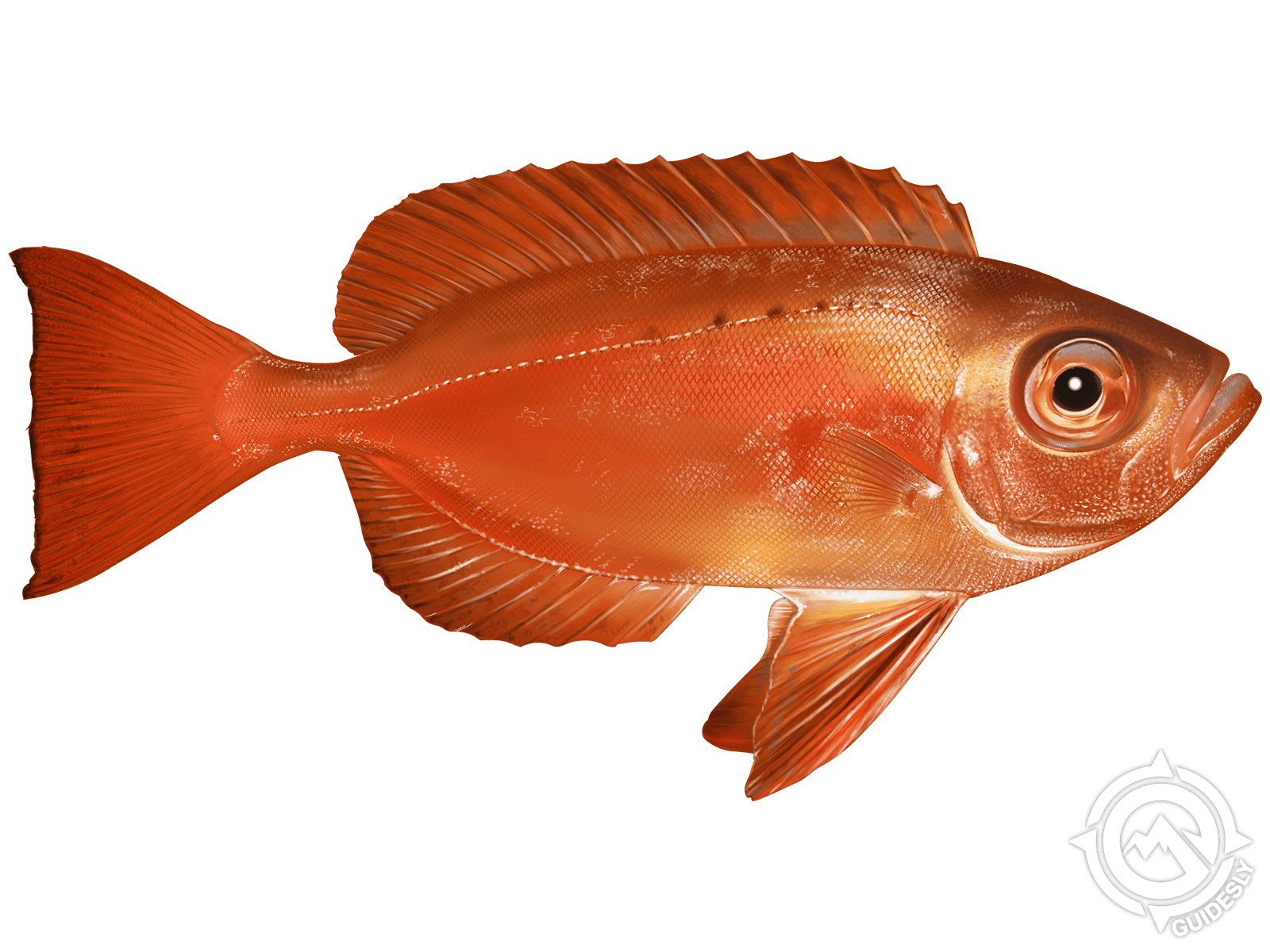Atlantic Bigeye

Species Details
Priacanthus Arenatus
Priacanthidae
Perciformes
Rocky Bottom, Reef
2 - 6 lbs.
8" - 20"
Atlantic Bigeye (Priacanthus arenatus) Fish Description
The Atlantic Bigeye is a species of marine ray finned fish in the family Priacanthidae. The Priacanthidae are also known as the Bigeyes. This is due to the member species` distinctive features which include their unusually large eyes suited to their carnivorous and nocturnal lifestyles.
The Atlantic Bigeye’s body is deep, oval and laterally compressed, possessing a large, upturned, oblique mouth with a projecting lower jaw. The head of the Atlantic Bigeye is asymmetrical with the tip of the lower jaw above the midline of its body. It has fin spines increasing in size to the rear.
The pelvic fins of Atlantic Bigeye are of moderate length, broadly fused to the belly. Its tail fin is slightly concave, with the posterior edge full of scales. The Atlantic Bigeye has a red body, head, and iris of the eye; sometimes, its body may be silvery with reddish bars and fins colored red to light pink. The Atlantic Bigeye has dusky membranes in the dorsal, anal, and tail fins; the latter has a dark blotch at the pelvic base.
Atlantic Bigeye Diet
The Atlantic Bigeye is a nocturnal feeder. This fish species mainly feeds on small fish, bristle worms and crustaceans.
Atlantic Bigeye Size
Most species in the Priacanthidae family reach a maximum total length of about 12 in, although in a few species, lengths of over 20 in are known. However, the Atlantic Bigeye is a species with a length of 8 to 20 inches and a weight of 2 to 6 pounds.
Interesting Facts About Atlantic Bigeye
- It is assumed that the large eyes of the Atlantic Bigeye are due to the reflective properties related to how it makes optimal use of the reduced available light so that they can forage for invertebrates
- Four species of the Priacanthidae are found in the Atlantic, and these are Cookeolus japonicus, Heteropriacanthus cruentatus, Priacanthus arenatus, and Pristigenys alta.
- Atlantic Bigeyes tend to live near or reefs, although a few are found in open waters. Many species are found below depths reachable by normal scuba diving.
- The earliest identified fossils of the Priacanthidae date to roughly 40 to 50 million years ago.
- Once a species of the Priacanthus, the Priacanthus liui is now extinct.
Atlantic Bigeye Fishing Techniques
Since these fishes are primarily nocturnal, they hang out in dark recesses much of the time. They are caught by being taken in trawl fisheries, indicating that they do make some forays away from certain structures.
Atlantic Bigeyes tend to be caught around dawn by utilizing a Sabiki Rig, consisting of six small golden hooks and feathers that act as bait. By using the method of jigging, a lead sinker with a hook molded into it is then usually covered by a soft body to attract fish, intended to create a sort of jerky motion.
Atlantic Bigeye Habitat & Distribution
The Atlantic Bigeye is distributed across tropically influenced areas of the Atlantic Ocean, from the Western Atlantic in Canada to Bermuda, USA. Lastly, it was found to also reside in waters from Madeira to the Mediterranean.
It lives on coral reefs, water columns and rocks. Its position in the water column ranges from mid-water to bottom; it is classified as an inshore-only type of fish.







